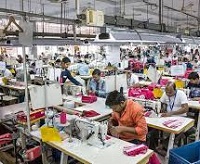 Offering zero tariffs on over 90 per cent goods, the Regional Comprehensive Economic Partnership (RCEP) agreement promises to reduce trade tax within the in the region in the next 10 years. As per a CCF Group report, the agreement was signed by China and 14 other countries on November 15. As mandated by this agreement, all RCEP members except Japan have signed free trade agreements with China, with limited marginal improvement.
Offering zero tariffs on over 90 per cent goods, the Regional Comprehensive Economic Partnership (RCEP) agreement promises to reduce trade tax within the in the region in the next 10 years. As per a CCF Group report, the agreement was signed by China and 14 other countries on November 15. As mandated by this agreement, all RCEP members except Japan have signed free trade agreements with China, with limited marginal improvement.
However, for the first time, China and Japan have reached a bilateral tariff reduction arrangement. This entail, Japan to reduce import tariffs on Chinese textiles and apparels to zero. This will encourage local Chinese mills to export textiles and apparels to Japan. In addition, it will also reduce its textile and apparel export limit to South Korea, Australia, New Zealand and other countries.
Encourages investments in the ASEAN region
Besides promoting export of high-value added Chinese products, RCEP also encourages textile and apparel export mills to increase investments in ASEAN countries. With this agreement, China can export 20 per cent of functional fabrics produced in Jiangsu Suzhou mill to Southeast Asia. The main products exported by this mill to Vietnam market include functional down jacket fabrics whose exports may increase by 40 per cent after the signing of RCEP. In addition, the agreement will also lead to a drop in prices of high-end looms imported from Japan.
countries. With this agreement, China can export 20 per cent of functional fabrics produced in Jiangsu Suzhou mill to Southeast Asia. The main products exported by this mill to Vietnam market include functional down jacket fabrics whose exports may increase by 40 per cent after the signing of RCEP. In addition, the agreement will also lead to a drop in prices of high-end looms imported from Japan.
Unifies trade rules in ASEAN
Earlier, one of the biggest hurdles in export of textiles and apparels overseas in terms of non-tariff measures was the varying nature of international trade standards of different countries. These trade agreements were changeable, such as the original rules of origin and investment policies. However, signing of RCEP will unify these rules in the region and improve the level of trade facilitation.
The agreement will also facilitate the clearance of suppliers, logistics and customs in China's textile and apparel export mills. To determine rules of origin, RCEP uses the principle of regional accumulation to accumulate the value components of products of origin in the region composed of 15 members, and the value components from any party of the RCEP.
The rules of origin of previous bilateral free trade agreements recognized a product whose origin country could not be recognized as the regional origin of RCEP after its regional value was accumulated. This enabled the product to enjoy RCEP’s preferential tariff, reduce production cost of the final product, and effectively avoid trade barriers of European and American countries. Now, companies aim to retain part of the labor-intensive section in Vietnam for processing, and transfer the latter process to China for further processing, so as to maximize the benefits through regional coordination and cooperation.
Enriches certificate of origin
The RCEP also enriches the types of certificate of origin. It allows the declaration system for country of origin to be changed from the official authorized visa agency's issuing mode to the enterprise's credit guarantee independent declaration mode. This allows the government to save administrative management and enterprise's operating cost to further improve the clearance time of goods.
Another benefit of RCEP is that it stimulates the flow and complementarity of goods, technology, services, personnel and capital among members. In the long run, the agreement will help to enhance the ability to resist global systemic economic risks.
RCEP is beneficial for not only China's textile and apparel exports, but also for Vietnam and other ASEAN countries. The agreement helps these countries increase their market share in RCEP region. It also helps China's textiles and apparel to compete with Japan, South Korea and Australia. Hence, the strategic significance of RCEP is greater than the promotion of exports.












